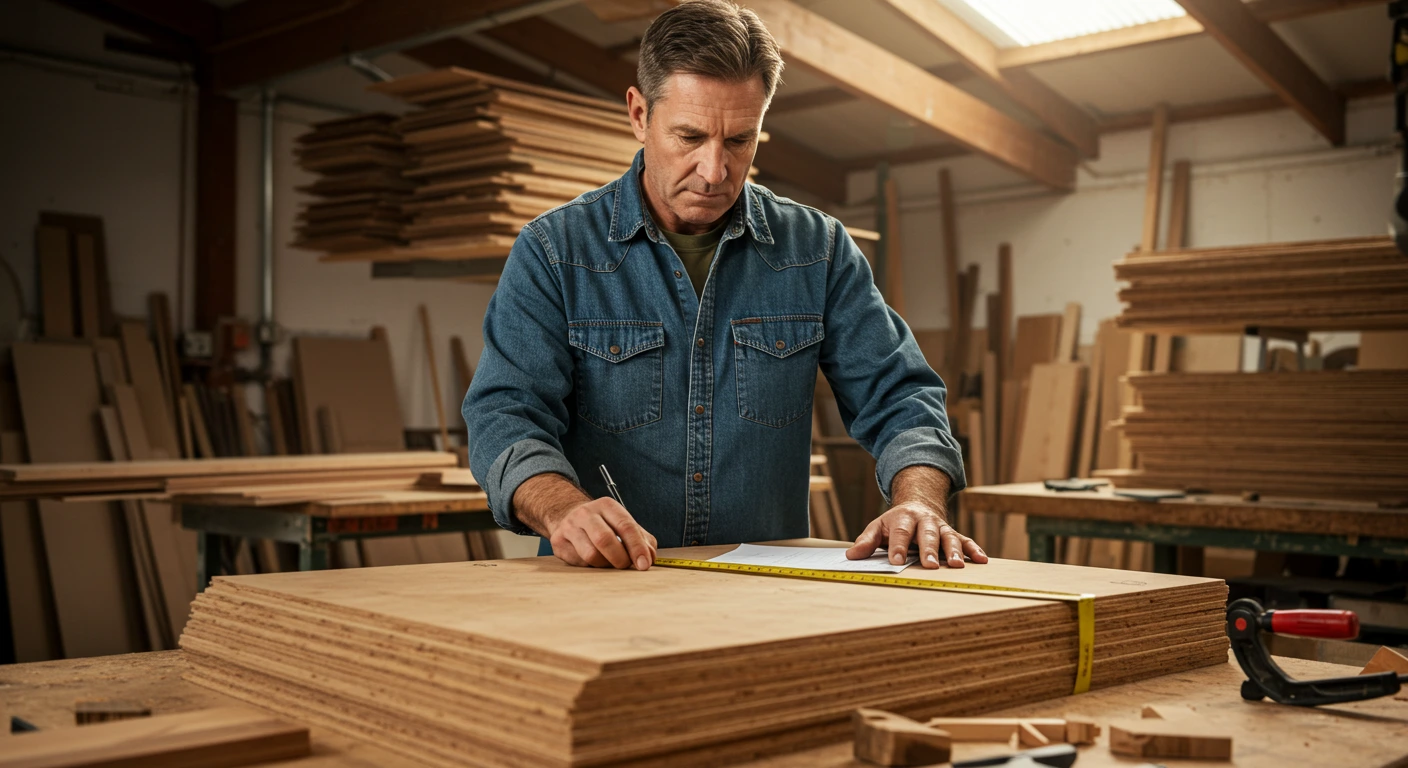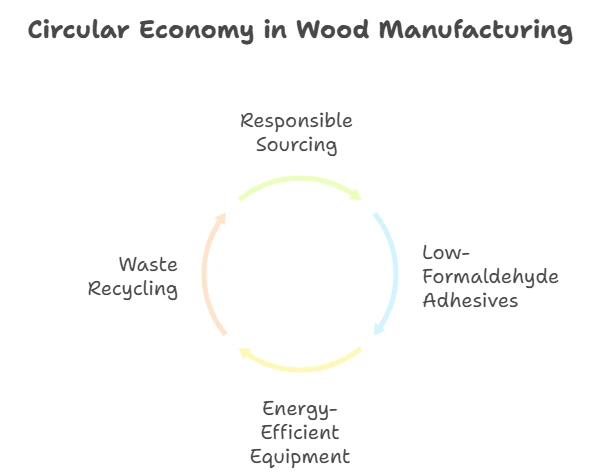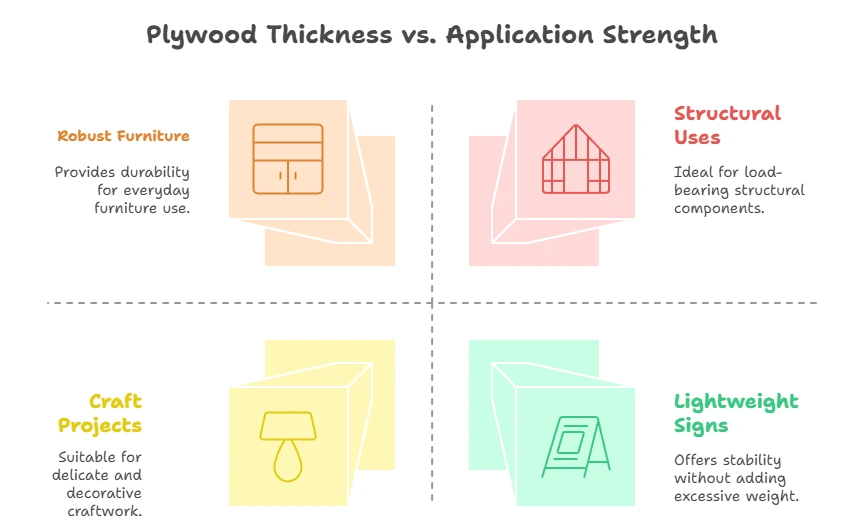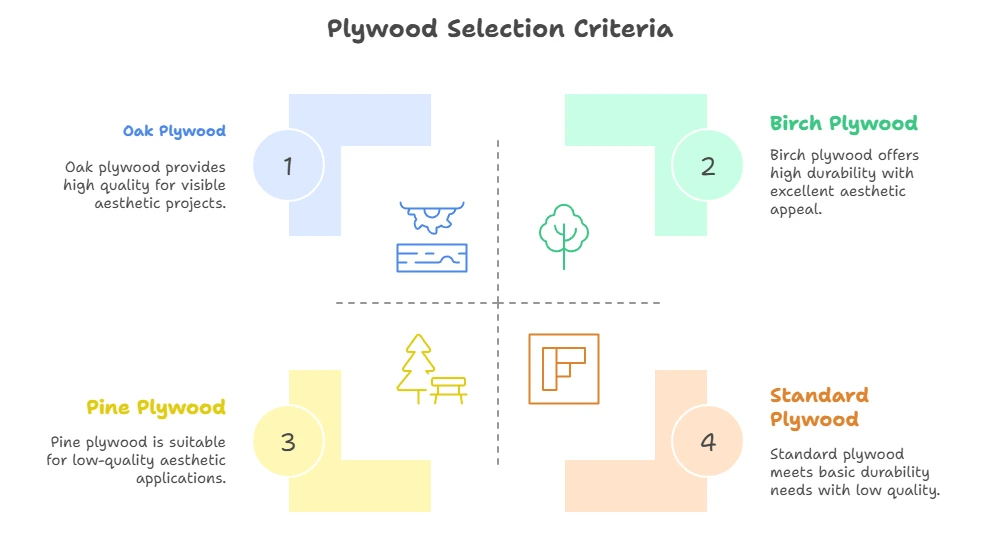
Plywood sheets have become a fundamental component in modern construction, prized for their versatility and functionality. Builders and designers alike appreciate plywood for its strength, lightweight nature, and ease of use. This engineered wood product offers countless applications, from residential homes to commercial spaces, and even in creative projects.
The basic structure of plywood consists of thin layers of wood veneer, glued together. This cross-grain pattern not only adds strength but also minimizes the risks of warping, cracking, and shrinking. The unique properties of plywood make it an ideal choice for a vast array of uses in the construction industry.
Key Benefits of Plywood Sheets
- Strength and Durability: Plywood sheets provide excellent load-bearing capabilities, making them suitable for flooring, walls, and roofing.
- Lightweight: Compared to solid wood, plywood is significantly lighter, ensuring easier handling and transportation at construction sites.
- Variety of Finishes: Plywood is available in numerous finishes and grades, offering aesthetic flexibility to match any design.
- Eco-Friendly Choice: Made from renewable resources, plywood is a more sustainable option compared to some other building materials.
- Cost-Effectiveness: Plywood is generally more affordable than solid wood, making it accessible for a wide range of budgets.
Interesting Applications of Plywood Sheets
Plywood sheets find their place in various aspects of construction and interior design. Their adaptability allows them to suit numerous projects:
- Flooring: Plywood is often used as an underlayment for tile, stone, or hardwood floors, providing a stable base.
- Cabinetry and Furniture: With the right finish, plywood can be transformed into beautiful furniture pieces that are both stylish and functional.
- Walls and Ceilings: Plywood panels can be used to clad walls or ceilings, adding warmth and texture to a space.
- Roofs: Plywood sheets can also serve as an ideal roofing material, providing structural support and insulation.
- Craft Projects: Beyond construction, plywood is a favorite among DIY enthusiasts for crafting artistic pieces and home décor items.
Choosing the Right Plywood
When selecting plywood sheets for your project, consider the following aspects:
| Criteria | Description |
|---|---|
| Type of Wood | Plywood can be made from various wood species, including birch, oak, and pine. Choose based on your aesthetic and durability needs. |
| Grade | Plywood grades range from A to D, indicating quality and finish. For visible projects, choose higher grades like A or B. |
| Thickness | Plywood thickness varies and can range from 1/8 inch to 1 inch or more. Thicker sheets provide more support. |
| Finish | Consider how you plan to finish the plywood—veneered, painted, or stained options all have different applications. |
Maintenance and Care of Plywood Sheets
To ensure the longevity of your plywood installations, proper care is crucial. Here are a few tips:
- Avoid exposing plywood to excessive moisture to prevent swelling and warping.
- Use sealants or varnishes to protect the surface from scratches and stains.
- Regularly inspect any plywood applications for signs of wear or damage and replace as necessary.
Plywood sheets are invaluable in modern construction due to their adaptability and performance. Whether you’re planning a new build, a renovation, or a DIY project, plywood is a material that suits a wide variety of needs. For more information on plywood and its uses, you can visit sites like Plywood.com and Lumber.com.
Comparing Plywood Sheets: Types and Uses
Plywood sheets are a popular material known for their strength, versatility, and cost-effectiveness. Made from thin layers of wood veneer, plywood is glued together to create a sturdy sheet that can be used for various applications. If you’re considering using plywood in your next project, understanding the different types and their respective uses can help you make an informed decision.
Types of Plywood Sheets
There are several types of plywood sheets, each designed for specific uses. The most common types include:
- Softwood Plywood: This type is made from softwood species like pine, fir, or spruce. It is often used in construction and furniture making because of its affordability and ease of use.
- Hardwood Plywood: Made from hardwood species like oak, maple, or birch, hardwood plywood offers superior strength and durability. It is typically used in high-quality furniture, cabinetry, and flooring.
- Marine Plywood: This type is specifically designed for use in damp or wet conditions. Made with waterproof glue and usually coated with a protective layer, marine plywood is ideal for boat building and outdoor applications.
- Birch Plywood: Known for its fine grain and strength, birch plywood is popular among cabinet makers and furniture builders. It provides an attractive finish and is easy to work with.
- Flexible Plywood: This type is thinner and designed to bend easily, making it perfect for projects that require complex shapes, such as curved furniture or architectural elements.
Common Uses of Plywood Sheets
Plywood sheets have a multitude of uses across different industries. Here are some common applications:
- Furniture: Plywood is often used in making tables, chairs, and cabinets due to its lightweight yet robust qualities.
- Flooring: Many builders use plywood as an underlayment for various flooring types, providing a strong base layer.
- Wall Surfacing: It can be used in wall paneling to add texture and warmth to interiors.
- Cabinetry: Plywood provides a sturdy material for both the structure and face of cabinets.
- Packaging: Some manufacturers utilize plywood for creating crates and boxes to ship heavy or valuable items, as it offers effective protection.
How to Choose the Right Plywood
Selecting the appropriate plywood sheet for your project requires considering several factors:
- Project Requirements: Determine the strength and durability needed. For instance, furniture projects may benefit from hardwood plywood for its aesthetic appeal.
- Environmental Conditions: If your project is outdoors or in a humid area, choose marine plywood to ensure longevity.
- Budget: Establish a budget. Softwood plywood is the most cost-effective, while hardwood options tend to be more expensive.
- Thickness: Plywood comes in various thicknesses. Select one that matches your needs—for example, thicker sheets for structural purposes.
Plywood Maintenance
Knowing how to maintain your plywood can extend its life significantly. Here are some maintenance tips:
- Seal exposed edges with a waterproof sealant.
- Avoid prolonged exposure to moisture to prevent warping.
- Regularly check for any signs of damage or wear, especially in high-use areas.
Where to Buy Plywood Sheets
You can purchase plywood sheets at most home improvement stores or lumber yards. Stores like Home Depot or Lowe’s usually have a wide selection. Online options are also available if you prefer shopping from home. Websites such as Woodworker’s Source offer various types and sizes suited for different projects.
With so many types of plywood sheets available, selecting the right one for your project doesn’t have to be overwhelming. Keep in mind the material’s properties, the specific requirements of your project, and regular maintenance practices to ensure your plywood stands the test of time.
—
Sustainable Practices in the Production of Plywood Sheets
Plywood sheets are an essential component in various industries, from construction to furniture making. However, as environmental concerns rise, the production of plywood is shifting towards more sustainable practices. Embracing eco-friendly methods not only helps the planet but also meets consumer demand for responsible products.
Sourcing Raw Materials Sustainably
One key aspect in the sustainable production of plywood sheets is sourcing raw materials. Many manufacturers are now committed to using wood from responsibly managed forests. This ensures that they contribute to the preservation of forests rather than their depletion. According to the Forest Stewardship Council (FSC), certified forests maintain biodiversity and minimize impacts on the environment.
Eco-Friendly Adhesives
Another important factor is the use of adhesives. Traditional plywood often uses harmful formaldehyde-based adhesives, which can release toxic fumes. Many forward-thinking companies have shifted to using low or no formaldehyde adhesives. By choosing these healthier alternatives, the indoor air quality in homes and offices is significantly improved.
Sustainable Manufacturing Processes
The manufacturing process itself has also been revamped to prioritize sustainability. Here are some common practices that contribute to greener plywood production:
- Energy Efficiency: Modern facilities implement energy-efficient machinery, reducing the carbon footprint of each plywood sheet produced.
- Waste Minimization: Many plants recycle wood scraps and chips, turning them into biofuel or other products, thereby minimizing waste.
- Water Conservation: Innovative methods are now in place to reduce water usage in the production process, ensuring safer, cleaner manufacturing practices.
Certifications for Sustainable Plywood
Besides environmentally friendly production methods, companies are also focusing on certifications that signal sustainability to consumers. Certifications such as PEFC and FSC provide assurance that the plywood sheets you purchase originate from sustainably managed forests. These labels can guide consumers in making informed choices that support sustainable practices.
Alternative Fibers in Plywood Production
Plywood sheets can also be produced using alternative fibers. Bamboo, for example, is a fast-growing plant that can be harvested more sustainably than traditional hardwoods. Using bamboo in plywood production offers a unique, eco-friendly alternative that meets customer needs while preserving forest ecosystems.
Waste Management and Circular Economy
Waste and byproducts generated during plywood manufacturing are also being tackled with sustainable solutions. Many companies are now investing in processes to convert waste into energy or other useful products. This strategy not only minimizes landfill contributions but also promotes a circular economy.
| Sustainable Practice | Description |
|---|---|
| Responsible Sourcing | Using wood from certified forests that meet strict environmental standards. |
| Low-Formaldehyde Adhesives | Using healthier adhesives to improve indoor air quality. |
| Energy-Efficient Equipment | Reducing energy consumption during the manufacturing process. |
| Waste Recycling | Turning wood scraps into useful products or biofuel. |
| Alternative Fibers | Using materials such as bamboo for eco-friendly plywood sheets. |

The demand for sustainable plywood sheets has surged as consumers become more environmentally conscious. Manufacturers are adapting to this shift by prioritizing sustainable practices. By choosing to support companies committed to eco-friendly plywood production, you are not only purchasing a product but also endorsing a commitment to sustainability and environmental stewardship.
It’s vital for the industry to continue evolving and innovating. Many promising advancements in technology and materials are underway. For instance, the potential use of mycelium—a natural fungus—as a bonding agent in plywood is being explored. Such innovations could revolutionize the way plywood is produced, making it even more sustainable.
Sustainable practices in the production of plywood sheets are becoming the norm rather than the exception. By focusing on responsible sourcing, cleaner manufacturing methods, and innovative materials, we can significantly reduce the environmental impact of plywood production. The shift towards sustainability not only benefits the planet but also fosters a responsible marketplace where consumers can feel good about their purchases.
For further reading on sustainable wood products, visit Green Building Advisor or check out the resources available at the WoodWorks website.
How to Choose the Right Thickness for Plywood Sheets
Choosing the right thickness for plywood sheets is crucial for the success of your project. Plywood comes in various thicknesses, typically ranging from 1/8 inch to 1 inch or more. Selecting the correct thickness not only impacts the durability and sturdiness of your structure but also ensures that the plywood will perform well in its intended application. Here’s a useful guide to help you determine which plywood thickness is best suited for your needs.
Understanding Common Plywood Thicknesses
Plywood thickness can affect everything from weight and flexibility to strength and insulation. Below are some commonly used thicknesses along with their typical applications:
| Thickness | Common Use |
|---|---|
| 1/8 inch | Craft projects, lightweight applications, and backing for panels. |
| 1/4 inch | Furniture backs, lightweight signs, and shallow shelving. |
| 3/8 inch | Shelves, light-duty partitions, and cabinets. |
| 1/2 inch | More robust furniture, cabinets, and interior walls. |
| 5/8 inch | Subflooring, roof sheathing, and load-bearing applications. |
| 3/4 inch | Heavy-duty furniture, workbenches, and structural uses. |

Factors to Consider When Choosing Thickness
When selecting the thickness of plywood sheets, it’s important to consider a few key factors:
- Purpose: Think about what you’re using the plywood for. Will it support weight? Is it for a decorative feature? Heavy-duty projects require thicker plywood, while lighter projects can use thinner sheets.
- Weight: Thicker plywood is heavier. Ensure that your frame or structure can support the weight effectively, especially if you are building furniture or installing shelving.
- Flexibility: Thinner sheets are more flexible and can be curved, making them ideal for applications like boat building or architectural features.
- Cost: Thicker plywood is typically more expensive. Create a budget and find a balance between quality and cost-effectiveness.
Applications Based on Thickness
To illustrate further how thickness impacts different projects, let’s explore common applications:
- 1/4 inch: This thickness is great for paneling, cabinet backs, and as a base for lightweight projects.
- 1/2 inch: Ideal for countertops, sturdy cabinets, and office furniture.
- 3/4 inch: Often used for bookshelves, subflooring, and heavy furniture pieces like dressers or tables.
Testing and Comparison
When you’re torn between two thicknesses, consider testing small samples. This can help you gauge how the thickness feels and performs in your specific project context. Additionally, comparing different brands and types of plywood can make a difference in quality. Always check for defects and ensure that the wood is well-laminated.
Where to Buy Plywood Sheets
You can find a variety of plywood sheets at home improvement stores, lumberyards, and online retailers. Be sure to check out specific retailers that specialize in plywood, such as Woodworkers Source and Home Depot. Both provide a wide selection and resources to help you choose the right thickness for your project.
Selecting the right thickness for plywood sheets is essential in contributing to the integrity and durability of your project. Take the time to assess your specific needs, test different options, and make an informed decision. By doing so, you can ensure that your plywood serves its purpose effectively and efficiently.
—
Creative DIY Projects Using Plywood Sheets
Plywood sheets are a versatile and cost-effective material for anyone looking to engage in DIY projects. Not only are they easy to work with, but they can also be transformed into stunning pieces for your home or garden. Whether you are a novice DIYer or a seasoned expert, here are some creative projects you can undertake using plywood sheets.
Crafting Furniture with Plywood
One popular project is crafting furniture. With a few cuts and some basic tools, you can create unique pieces that fit your space perfectly. Here are some furniture ideas to get you started:
- Bookshelves: Simple shelves can be made using plywood sheets to store and display your books or decorative items.
- Coffee Tables: Create a modern coffee table by stacking layers of plywood and adding legs or wheels for mobility.
- Stools or Chairs: Design sleek and stylish seating options that are both functional and eye-catching.
Building a Garden Planter
For a rustic touch, consider building a garden planter. Plywood sheets can withstand outdoor conditions when sealed correctly. Here’s how to make one:
- Cut the plywood into desired sizes for the base, sides, and bottom of the planter.
- Assemble the pieces using waterproof wood glue and screws.
- Seal it with outdoor paint or wood sealant to protect it from moisture.
- Once dry, fill it with soil and your favorite plants!
Creating Wall Art or Decor
Another exciting project is creating wall art or decor. Plywood sheets can be cut into various shapes and sizes, allowing you to explore your creative side. Here are some ideas:
- Geometric Wall Art: Cut plywood into different geometric shapes and arrange them on your wall for a contemporary look.
- Silhouettes: Trace images onto the plywood, cut them out, and paint them for a stunning silhouette effect.
- Photo Frames: Design unique photo frames by cutting out intricate patterns along the edges.
Making Kids’ Toys
If you are looking for something fun and functional, consider making kids’ toys. Plywood is sturdy enough for various projects, and children love having personalized toys. Here are some suggestions:
- Puzzles: Cut different shapes or animals out of plywood to create custom puzzles.
- Wooden Cars: Simple designs can be made into cars or trucks, perfect for little hands to play with.
- Playhouses: Create a mini playhouse for your children using plywood sheets, which can be painted and decorated as they like.
Tips for Working with Plywood in DIY Projects
When working with plywood sheets, always remember to use the right tools for cutting and finishing. A jigsaw or table saw is ideal for making accurate cuts, while sandpaper can help smooth the edges. For sealing and painting, choose high-quality products that are suitable for plywood.
If you’re new to woodworking or DIY projects, consider checking out tutorials available online. Websites like Wood Magazine and Instructables offer step-by-step guides that can enhance your skills and provide inspiration.
| Project Type | Materials Needed | Estimated Time |
|---|---|---|
| Furniture | Plywood sheets, screws, glue, paint | 1-2 days |
| Garden Planter | Plywood sheets, wood glue, sealant | 4-6 hours |
| Wall Art | Plywood sheets, saw, paint | 2-3 hours |
| Kids’ Toys | Plywood sheets, non-toxic paint, glue | 3-5 hours |

No matter which project you choose, plywood sheets can bring your creative ideas to life. As you embark on your DIY adventure, enjoy the process of crafting and personalizing your creations! With a little imagination and some plywood sheets, the possibilities are endless.
—
Conclusion
Plywood sheets have transformed the landscape of modern construction, showcasing unmatched versatility across various applications. From framing structures to creating stunning interior designs, the ability to choose the right type of plywood sheet allows for tailored solutions to meet diverse project requirements. By comparing types such as hardwood, softwood, and marine-grade plywood, it’s clear that understanding their unique properties is essential for optimal use.
Sustainability plays a crucial role in the production of plywood sheets. Many manufacturers are now adopting eco-friendly practices, employing sustainably sourced wood and minimizing waste, making plywood a responsible choice for your building projects. This commitment to the environment not only enhances your project’s appeal but also aligns with the growing demand for sustainable materials.
When it comes to selecting the right thickness for your plywood sheets, considering the intended use is vital. Whether constructing furniture or building frameworks, the proper thickness ensures durability and functionality.
Those creative at heart can find endless possibilities in DIY projects using plywood sheets. From chic home decor pieces to practical storage solutions, the ease of working with plywood allows even novice crafters to unleash their creativity.
Ultimately, plywood sheets are more than just a building material; they are a gateway to innovation and sustainability in construction and design. By understanding their benefits and possibilities, you can make informed choices that not only elevate your projects but also contribute to a greener future. Dive into the world of plywood sheets and let your imagination lead the way.
